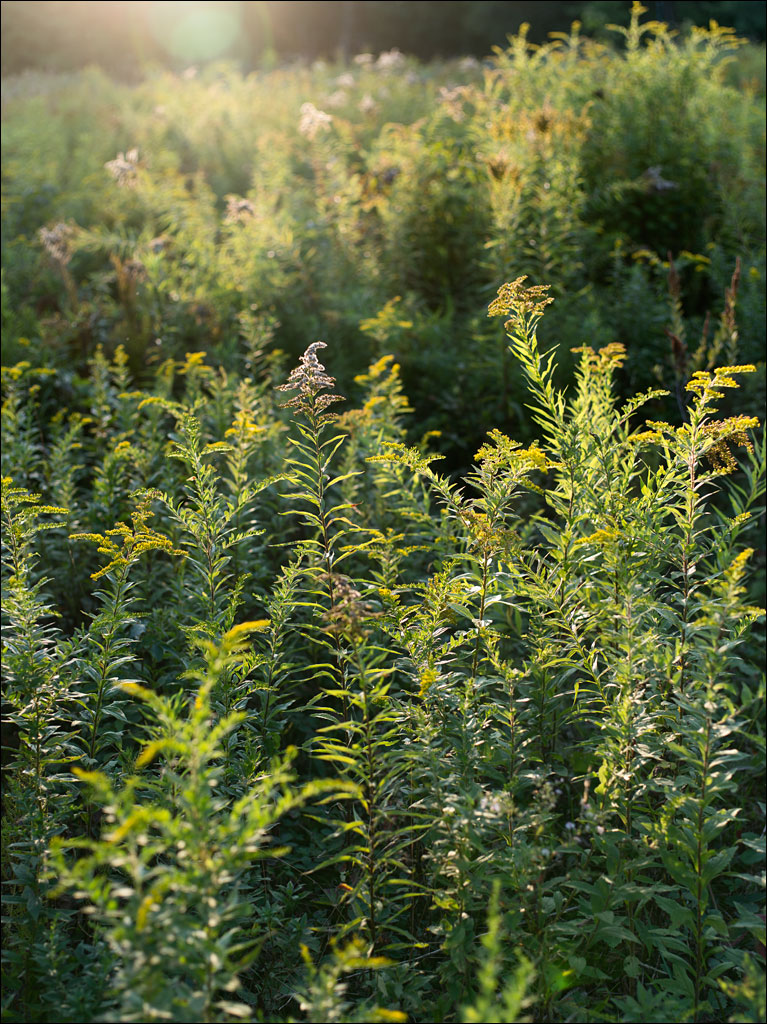 Our wild plum are now in bloom. The trees cluster around an old ash at the entrance of our driveway. Since the forest has not come into foliage, the light from the setting sun strikes them in the evening. The bloom are still white, but they will turn pink as the leaves come out. In August, we can harvest the fruit. Click on the image for a larger view.
Our wild plum are now in bloom. The trees cluster around an old ash at the entrance of our driveway. Since the forest has not come into foliage, the light from the setting sun strikes them in the evening. The bloom are still white, but they will turn pink as the leaves come out. In August, we can harvest the fruit. Click on the image for a larger view.
Category Archives: Edible Garden
Chocolate Surprise
 This is a recipe for black bean fudge. It has a soft and smooth texture and a light flavor. It is gluten free and really healthy. The original recipe came from the BlendTec site, but Naomi modified it into something a little healthier and with a little more spice:
This is a recipe for black bean fudge. It has a soft and smooth texture and a light flavor. It is gluten free and really healthy. The original recipe came from the BlendTec site, but Naomi modified it into something a little healthier and with a little more spice:
3 cups of cooked black beans
4 tsp vanilla extract
3 dried pitted dates
3 dried figs
2/3 cup coconut oil
1 cup of unsweetened cocoa
2/3 cup of honey
1/4 to 1/5 tsp of chili powder
Nuts are an optional ingredient. Mixed all the ingredients in a blender. Pour the mixture into a 8 x 8 inch baking pan and refrigerate for at least 2 hours. Cut into one inch cubes. You can freeze what you can’t eat. Click on the image for a bigger bite.
Thanksgiving Dinner
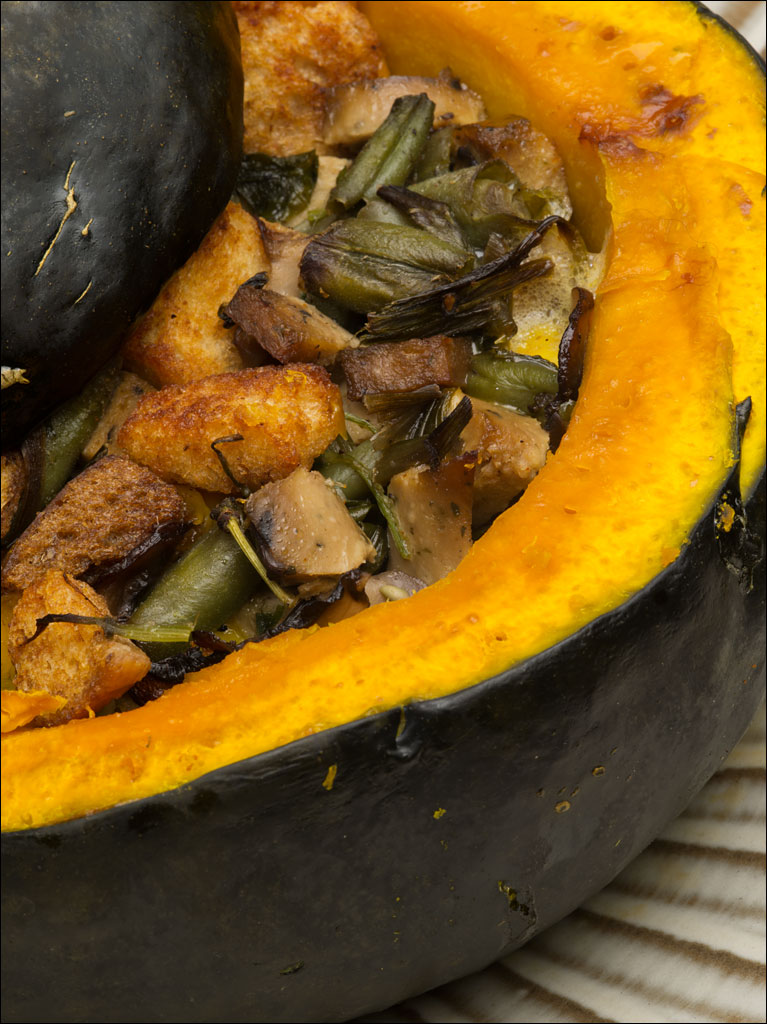 Naomi and I don’t eat meat. For Thanksgivings we made a stuffed kabocha. Kabocha is a well known squash in Japan. You can eat the cooked flesh by itself or stuff the entire fruit. For the stuffing, we used ingredients from our garden: plantain, spiderwort, day lilies, goutweed, and bush beans. We added some vegetarian sausage, mushrooms, croutons, and cheese. (This would be good for other holidays, feasts, or an everyday meal.) Click on the image for a larger view.
Naomi and I don’t eat meat. For Thanksgivings we made a stuffed kabocha. Kabocha is a well known squash in Japan. You can eat the cooked flesh by itself or stuff the entire fruit. For the stuffing, we used ingredients from our garden: plantain, spiderwort, day lilies, goutweed, and bush beans. We added some vegetarian sausage, mushrooms, croutons, and cheese. (This would be good for other holidays, feasts, or an everyday meal.) Click on the image for a larger view.
Giving Thanks
We wish everyone a happy Thanksgiving.
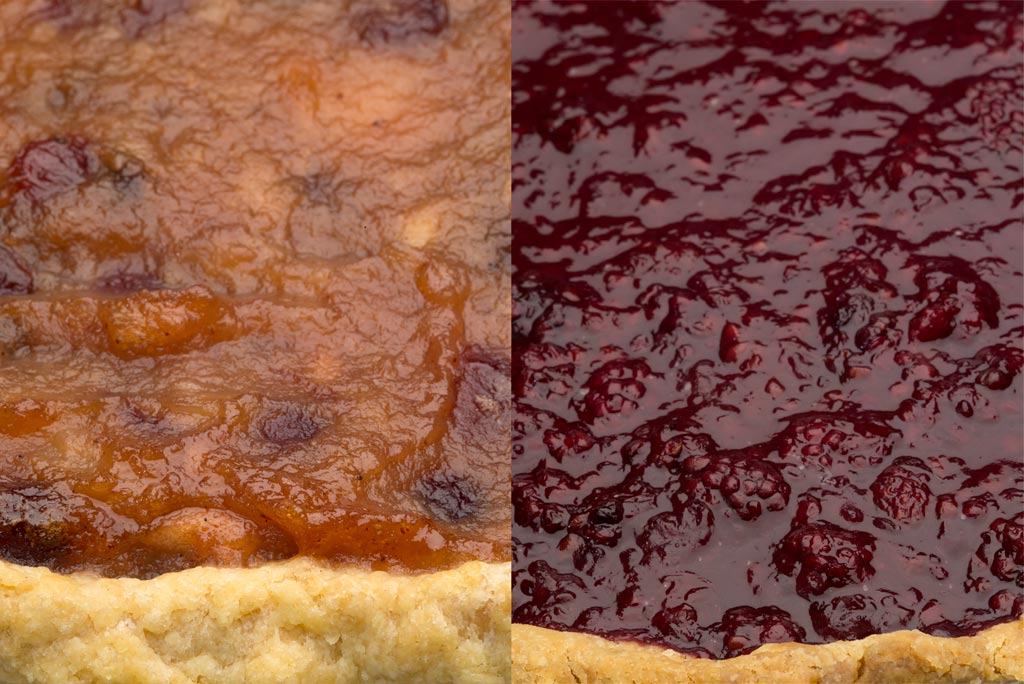 Today is Thanksgiving in the US. Like many people, we are celebrating the holiday with a meal. We have been using foods we have harvested from our garden. Two dishes I am really looking forward to are an apple pie with cranberries and a blackberry pie. The apples are from our tree of an unknown variety. The blackberries are from our field. Click on the image for a larger view.
Today is Thanksgiving in the US. Like many people, we are celebrating the holiday with a meal. We have been using foods we have harvested from our garden. Two dishes I am really looking forward to are an apple pie with cranberries and a blackberry pie. The apples are from our tree of an unknown variety. The blackberries are from our field. Click on the image for a larger view.
Lost Varieties—Apples of Maine
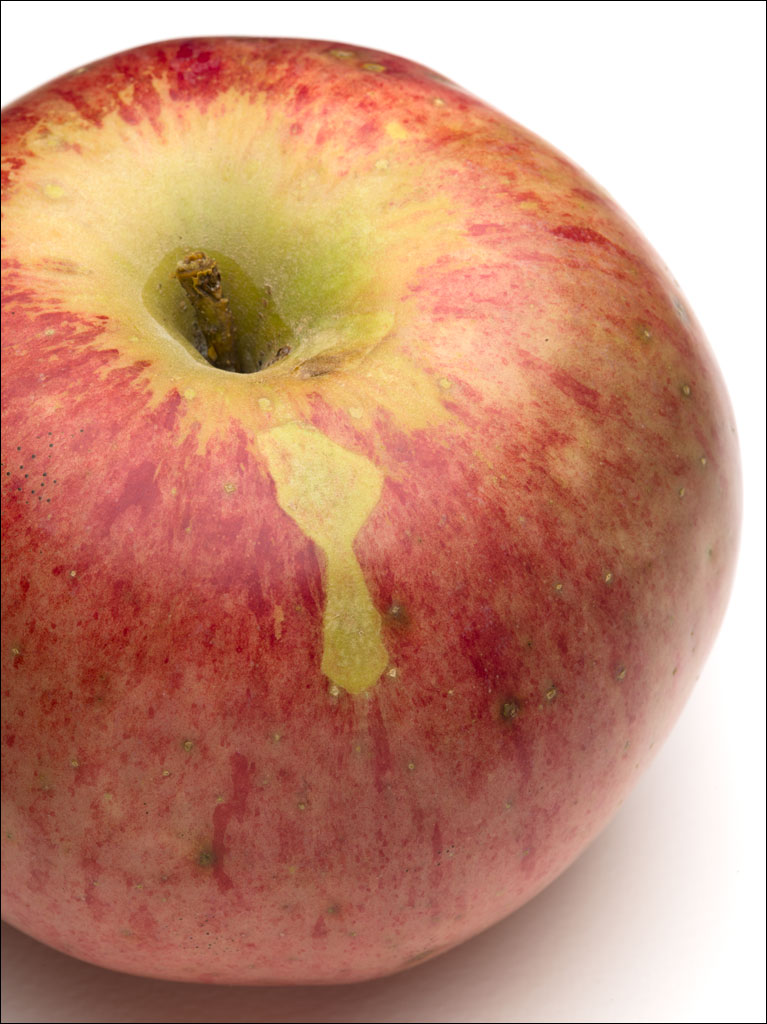 Throughout Maine are lost varieties of apples growing in old fields. While our supermarkets limit our choice, usually red, yellow, and green, thousands of apple varieties have been cultivated. Some have been saved in seed banks and specialty orchards, but many have been lost to time and memory—it can be hard to identify an apple by appearance.
Throughout Maine are lost varieties of apples growing in old fields. While our supermarkets limit our choice, usually red, yellow, and green, thousands of apple varieties have been cultivated. Some have been saved in seed banks and specialty orchards, but many have been lost to time and memory—it can be hard to identify an apple by appearance.
We have one lost variety on our land. It fruits biennially and produces large, round apples. The flesh is white and very light; despite the size, they do not weight that much. It is not a sweet apple, but neither does it have a sharpness of a Granny Smith. Lemony would be a good description. If you cook it, it takes on a pleasant sweetness, but it does not retain its shape. We eat this raw or make apple sauce for itself or as pie filler. Click on the image for a larger view.
Apple Harvest
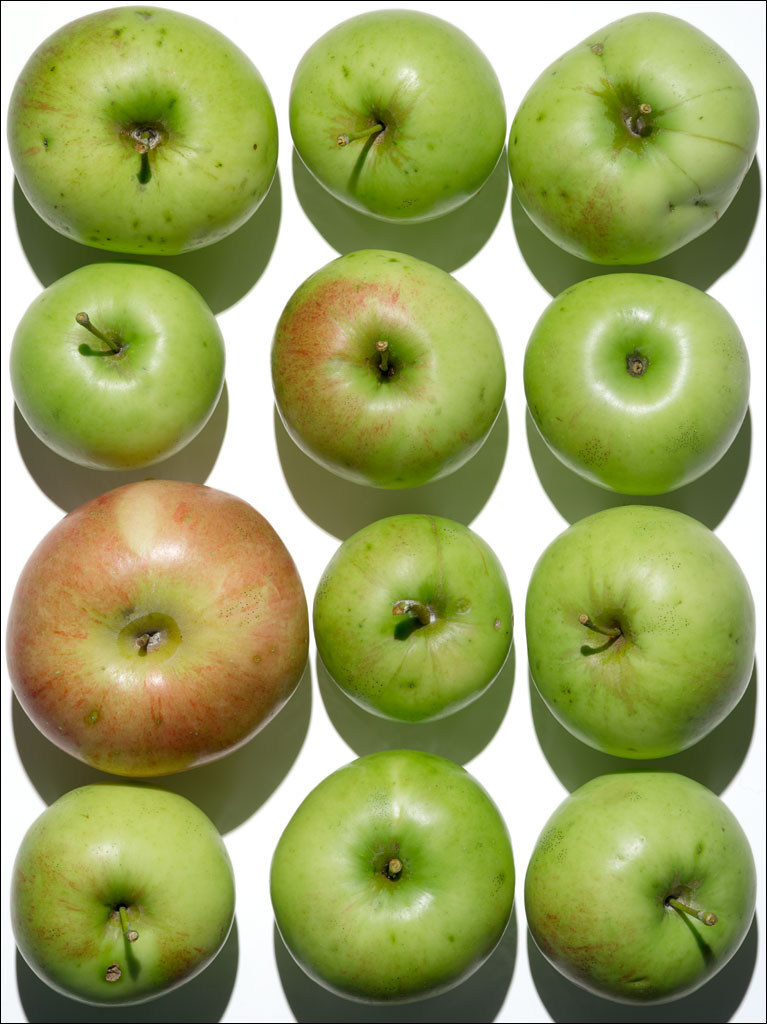 It is turning out to be a great year for apples. And not just for us—apple trees, abandoned and cultivated, are full of fruit around Maine. We use no pesticides on our trees and so our apples are not as pretty as the fruit you find in the supermarket. The only thing we do to protect the crop is to spray it with a fine clay called Surround.
It is turning out to be a great year for apples. And not just for us—apple trees, abandoned and cultivated, are full of fruit around Maine. We use no pesticides on our trees and so our apples are not as pretty as the fruit you find in the supermarket. The only thing we do to protect the crop is to spray it with a fine clay called Surround.
The green apples seem to be a Granny Smith variety, although it does not have the tartness of a Granny Smith. We usually only get a couple of fruit from this tree, but this year we may have harvested a half a bushel. The red apple is an unknown variety that is biennial. It is a little early to eat; most of the fruit is still on the tree ripening. Click on the image for a larger view.
Garden Mystery
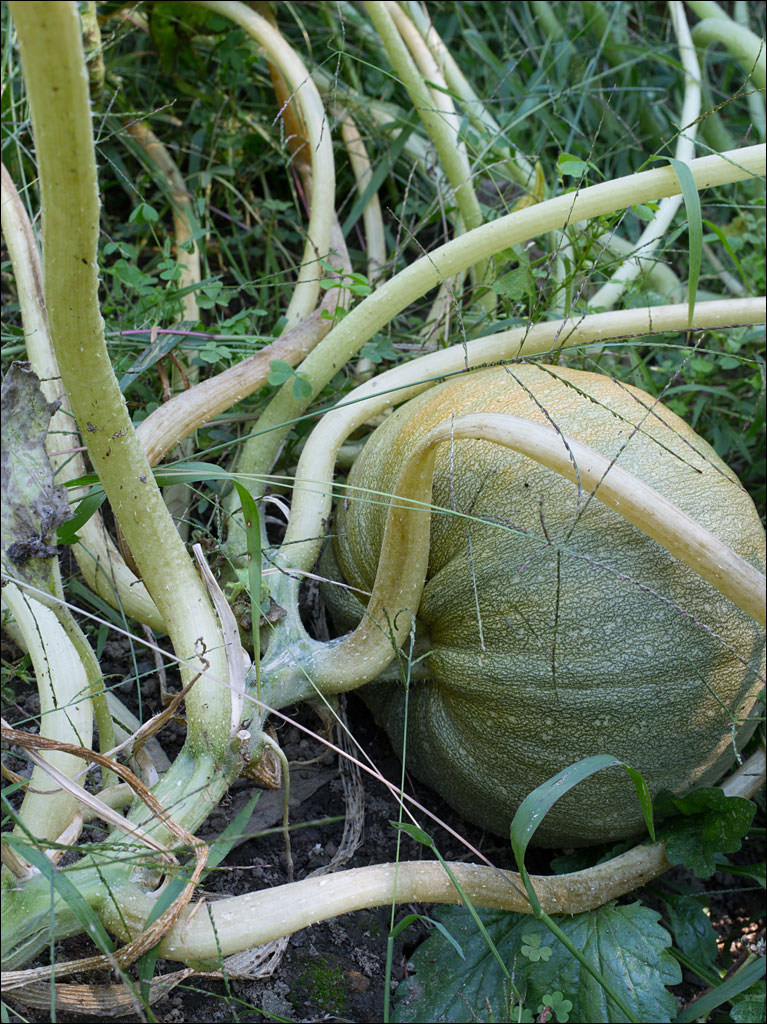 We have a mystery growing in our garden. We did not plant this squash or pumpkin or whatever it is. Most likely it is from the seed of a hybrid squash we planted the year before, but is not growing to type. It is big and looks healthy. Not right to harvest, but when it ripens, we will certainly take a closer look. Click on the image for a larger view.
We have a mystery growing in our garden. We did not plant this squash or pumpkin or whatever it is. Most likely it is from the seed of a hybrid squash we planted the year before, but is not growing to type. It is big and looks healthy. Not right to harvest, but when it ripens, we will certainly take a closer look. Click on the image for a larger view.
Sweet Crab Harvest
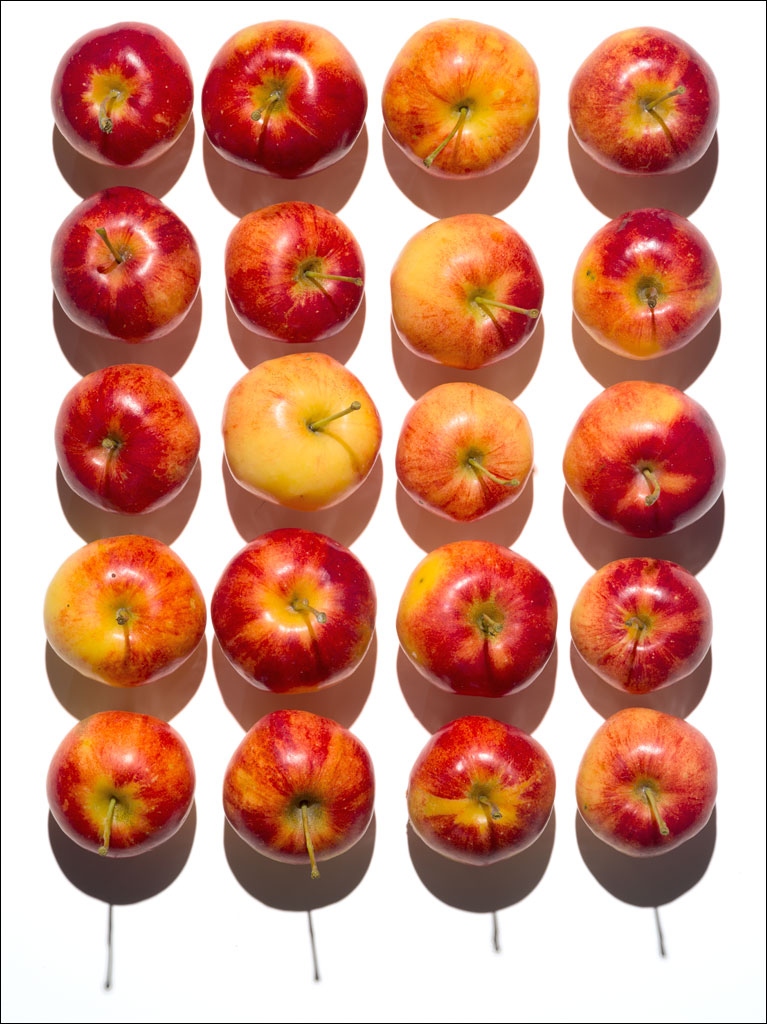 We had a great harvest of our Sweet Crab Apples this year. We have found this to be a great apple to have. While they are tart eaten fresh, once cooked, they have a wonderful sweetness to them. We dry some and turn some into sauce. Click on the image for a larger view.
We had a great harvest of our Sweet Crab Apples this year. We have found this to be a great apple to have. While they are tart eaten fresh, once cooked, they have a wonderful sweetness to them. We dry some and turn some into sauce. Click on the image for a larger view.
Golden Hour
End of the Blackberry Harvest
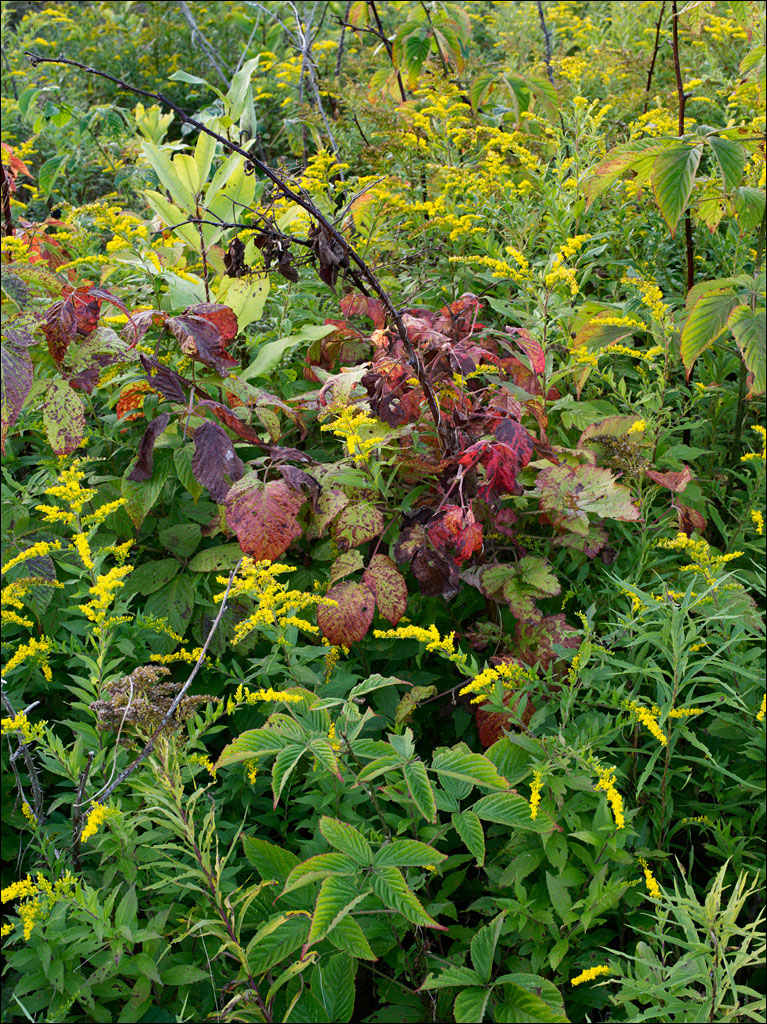 Our blackberry harvest is drawing to a close. We had a great crop, which we mostly froze to use over the winter. We kept some fresh for our breakfast, though. The blackberry canes in our field are starting to turn color. They tend to be the first signals of the ending summer, even while our golden rod remain in bloom. Click on the image for a larger view.
Our blackberry harvest is drawing to a close. We had a great crop, which we mostly froze to use over the winter. We kept some fresh for our breakfast, though. The blackberry canes in our field are starting to turn color. They tend to be the first signals of the ending summer, even while our golden rod remain in bloom. Click on the image for a larger view.

